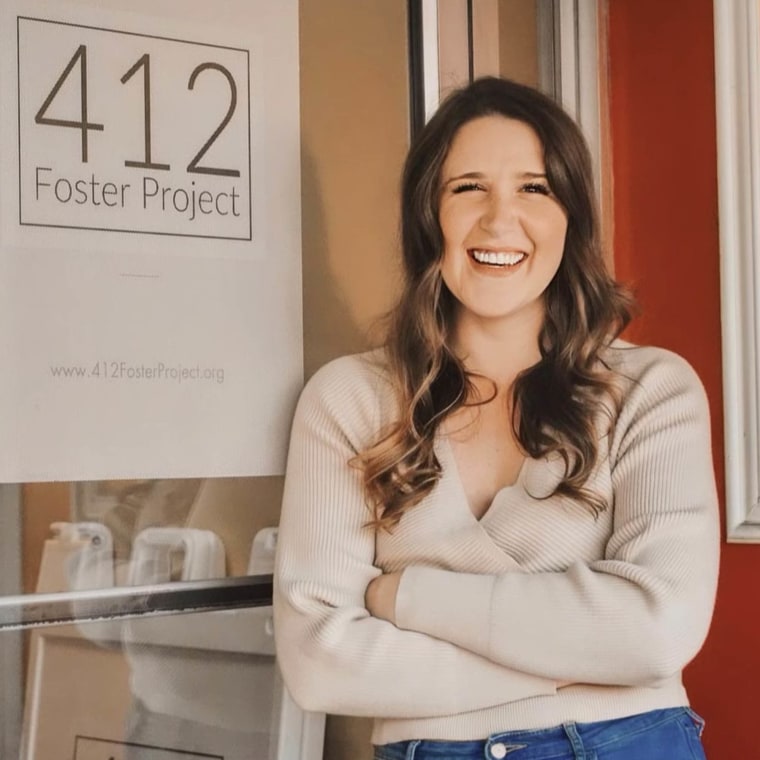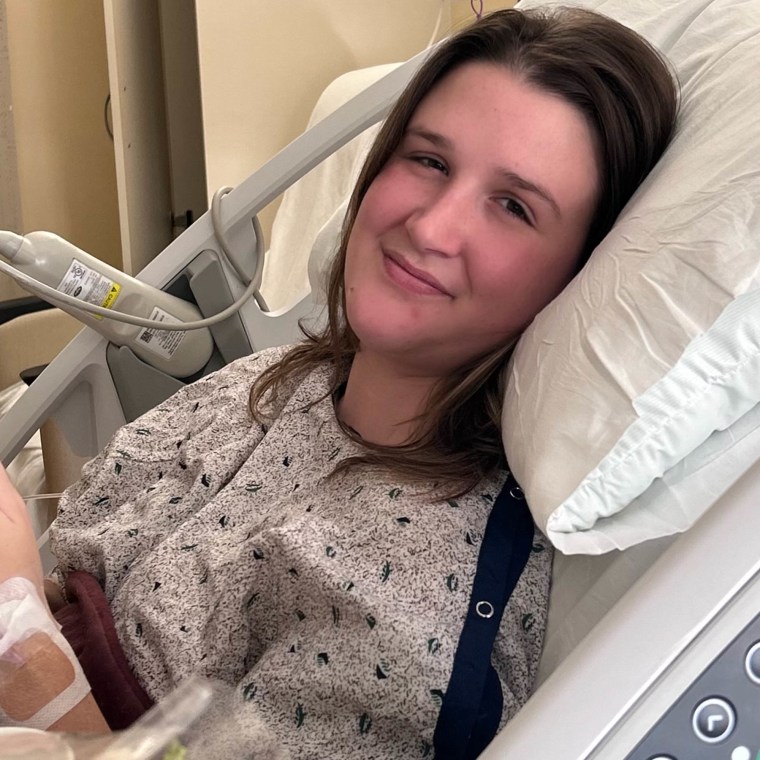After undergoing treatment for cervical cancer seven years ago, Jenna Bosi experienced pain, heavy bleeding, three miscarriages and several abnormal pap smears. She asked for a hysterectomy, or removal of the uterus, hoping to alleviate some pain and reduce her chance of cancer returning. But the specialist she saw dismissed her concern.
“The second I walked in, it was like, ‘Well, I don’t really want to give you a hysterectomy. I would like to see you have more kids and I think that I can do this, this and this. You’re just too young and you’re going to regret it,’” Bosi, 29, from Pittsburgh, tells TODAY.com. “I was shocked. I walked out of that office in tears.”
Cervical cancer, endometriosis and adenomyosis
Throughout her life, Bosi experienced devastating period pain, heavy menstrual bleeding and other symptoms from endometriosis, a condition where tissue similar to the lining of the uterus grows outside the uterus. Then in 2016, an annual pap smear detected abnormal cells, so her OB-GYN biopsied her cervix. That’s when she learned she had stage 0, in situ, cervical cancer, meaning she had some abnormal cells but they hadn't yet spread to tissue nearby.

She underwent what's known as a LEEP procedure, where a heated wire loop is used to remove cells or tissue in a women's genitals.Afterward, Bosi had to undergo more frequent pap smears to make sure no more abnormal cells or cancer had developed. At the same time, she began experiencing more painful cramping and heavy bleeding due to her endometriosis.
“Probably six months after I got my first period when I was 12, I started having symptoms of endometriosis. It’s always been a battle,” she says. For part of her life, she'd undergo surgery to treat the endometriosis tissue every 18 months.
It can take anywhere from seven to 10 years to receive an endometriosis diagnosis, and as a teen, Bosi had doctors who attributed her pain to depression or thought she was seeking drugs. She once bled so much she needed a blood transfusion.
“I had a period that was on and off, heavy, for six months,” Bosi says. “I ended up in the hospital because of it.”
After her brush with cervical cancer, when she experienced bleeding and pain, it became difficult to know if the cancer had returned or if it was due to endometriosis. Abdominal and pelvic pain plagued Bosi, and she needed ultrasounds often to make sure a cancerous tumor hadn’t developed on her cervix. But doctors never found one, instead attributing her symptoms to endometriosis.
She tried multiple treatments and even diets to manage her endometriosis, but nothing seemed to help. Often, she didn’t know where to turn.
“Doctors not believing me (before I was diagnosed with endometriosis), that took a really hard toll on my mental health, and I was terrified to go see a doctor,” she says. “I had no idea what they were going to say to me, how I was going to be perceived.”
After being treated for cervical cancer, she also experienced three miscarriages. Being in constant physical pain and facing the mental anguish of miscarriage felt overwhelming at times. Her doctor supported her, but he often referred her to other specialists because of how complicated her health was.
“I was really lucky my primary gynecologist is wonderful, and I always felt super heard,” Bosi says. “Anytime he referred me out to other doctors, I did not always feel heard.”
As time passed, Bosi worried about her cervical cancer recurring. That fear combined with worsening bleeding and pain made her want to pursue a hysterectomy. Her primary gynecologist recommended that she visit a doctor specializing in minimally invasive surgery to discuss the hysterectomy because he believed her case needed specialist attention. Bosi thought the meeting would be routine and the doctor would agree to the procedure.
“There was a lot of chronic pain. I also had three miscarriages and that was traumatic,” she says. “The regular pap smears caused a lot of pain. … I had gotten to the point where I didn’t want to live with the anxiety and fear all of the time.”
She felt stunned when the doctor did not agree.
“I felt like I was a bad person because I wanted a hysterectomy,” Bosi recalls. “I was having so much pain and bleeding (and) irregular pap smears. ... It is so ridiculous."
At that doctor's recommendation, Bosi underwent another surgery to treat the endometriosis tissue, but it worsened her symptoms, and she had complications. After she recovered, her gynecologist helped her find another expert, who performed a hysterectomy and removed her fallopian tubes and left ovary. Later, testing revealed Bosi also had adenomyosis, a condition where the tissue lining the uterus grows into the muscle wall of the uterus, causing pain and heavy bleeding. Hysterectomy is a standard treatment.
“I feel so much better,” she says. “I honestly have not felt this good in probably 15 years.”

Cervical cancer
Annually, 11,500 people are diagnosed with cervical cancer and about 4,000 people die from this cancer nationally according to the U.S. Centers for Disease Control and Prevention. Like Bosi, many do not experience symptoms, and when they occur, they are vague. According to past TODAY.com reporting, symptoms can include:
- Bleeding between periods
- Bleeding after sex
- An unusual discharge
These symptoms are also associated with other conditions, such as endometriosis and adenomyosis, for example. That can lead to delayed diagnosis in some cases because some do not realize these symptoms are abnormal or they feel embarrassed to discuss them.
“There’s a shame and embarrassment about talking about women’s bodies,” Dr. Meera Ravindranathan, medical director of OncoHealth, a group supporting people with cancer previously told TODAY.com. “It’s very important that women have a relationship with their doctors where they feel comfortable and have the confidence to talk about their bodies, especially younger women.”
Sharing her story
During her hysterectomy, her doctor found endometriosis and scar tissue “everywhere,” Bosi recalls, and she needed a stent for her bladder, also damaged from endometriosis. Her cervix had irregular cells, and she had adenomyosis in her uterus. Through this process, she discovered a lot about herself.
“I let a lot of doctors tell me I was crazy, and for some of that time, I really thought I was,” she says. “I really learned to trust myself because I never got it wrong.”
Bosi had her hysterectomy about a month ago and is looking forward to finishing her Ph.D. and spending time with her son.
“I really felt like I had to be a part time parent,” she says. “I’m super excited to be able to get on the floor and play with him and hold him and just do all the things a crazy 4-year-old does.”

Bosi shared her story because she hopes more women seek help if they have any health problems.
“When we talk about these things and make a safe place to talk about them, the shame dies,” she says.